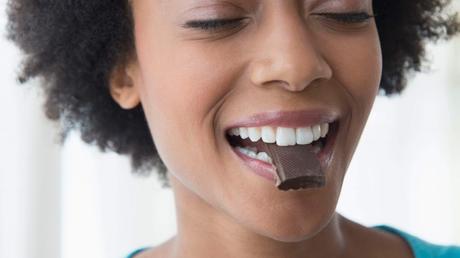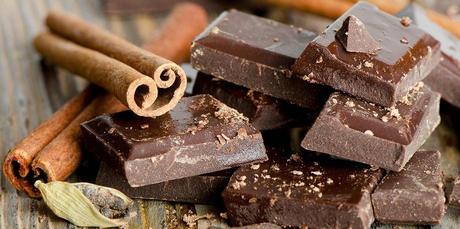For a long time, a debate has been going on around the question “Does Chocolate Cause Acne?”. This has prompted several researchers to conduct studies to discover the truth.

Since 1969, chocolate has been investigated as a possible cause of acne. The earliest studies on chocolate bars and candies containing sugar and other ingredients have been excluded from the debate. Even though several studies have concluded that chocolate is a major cause of acne, some researchers have dismissed the chocolate-acne link.
Since 1969, chocolate has been investigated as a possible cause of acne. The earliest studies on chocolate bars and candies containing sugar and other ingredients have been excluded from the debate. Even though several studies have concluded that chocolate does cause acne, some researchers have dismissed the chocolate-acne link.
ACCORDING TO STUDIES DOES CHOCOLATE CAUSE ACNE?
According to an epidemiological (study of distribution and patterns) study, chocolate stimulates human blood mononuclear cells, causing them to react aggressively when they meet acne bacteria like Propionibacterium.
A double-blind study involving 14 acne-prone men aged 18 to 35 was conducted. Consumption of unsweetened cocoa is linked to acne, according to the findings.
According to a 2017 study, a group of acne-prone college students experienced the worst acne phase after eating chocolate.
Studies that Refute Chocolate-Acne Link In 2003, an Australian study emphasized the role of insulin in acne breakouts. According to the findings, chocolate intake may affect the body’s insulin levels, and insulin may be a contributing factor in acne. As a result, there is no direct connection between acne and cocoa consumption.
The impact of insulin resistance on acne vulgaris, a common skin condition among teenagers, was investigated. Insulin tolerance appears to play a role in the production of acne vulgaris, according to the results.
Two young adults were asked to keep a food diary and adopt a high-glycemic diet in a case-control study. Adults in the first group had acne vulgaris, while those in the second group did not. They drank milk and ice cream for a period, demonstrating a strong connection between their diet and acne. However, the study found no correlation between acne and chocolate.
There’s no doubt that chocolate is a delectable treat. At the same time, there are various explanations why you might want to stop it or limit your chocolate consumption. Chocolate is also associated with acne, which is one reason so many people avoid it. Chocolate is also blamed for triggering breakouts and blemishes. But what about the possibility of chocolate causing acne? Is it the extra weight? What about the dairy? Is it the sugar? Today, our team at Makeup Deals and Coupons will deconstruct whether science has established a connection between chocolate and acne, as well as answer any questions you may have.
- Affirmative Connection Between Chocolate and Acne
First and foremost, let’s answer the most critical issue. Put, despite decades of study, it’s difficult to come up with a definitive response. That appears absurd at first glance: certainly, after years of research, there would be a definitive response, right?
No, not at all. Much research on chocolate and acne from years ago used both chocolate and control bars in their experiments. The problem was that the control bars had the same amount of sugar (or even more!) than the chocolate bars. This is significant because evidence shows that high-glycemic foods (those high in processed carbohydrates and sugars) are linked to acne. Foods with a high glycemic index raise blood sugar levels, resulting in an insulin spike that affects hormones. As a result, more sebum is generated, resulting in even more acne. (More on that later!) As a result, the chocolate and acne controversy were riddled with inconsistencies—was it the sugar or the chocolate?
Studies have been performed in recent years, with mixed results. According to an American Family Physician report, when college students consumed the same amount of chocolate as their peers who ate jellybeans, there was a “statistically important rise” in acne. A 2012 study in which over 40 teenagers held a food diary and were tested by a dermatologist found no connection between chocolate and acne. However, most recent findings seem to show that chocolate does not induce acne in and of itself. Of course, further study with larger, more diverse sample groups is needed.
Is Acne Caused By Cocoa Powder?
So maybe the chocolate bar will not cause you to break out this weekend. So, what is the deal with cocoa powder? Could cocoa powder, which is found in chocolate, be the culprit? Again, the solution is not so cut-and-dry. One study found that consuming 99 percent dark chocolate daily increased acne in men with acne-prone skin. It is worth noting, though, that they had daily acne breakouts before this.
However, most research that has concentrated solely on cocoa powder and its potential connection to acne has used limited sample sizes, which increases the risk of errors. This means that, as with chocolate, further research is needed before a definitive response can be reached.
Is It Bad For Your Skin To Eat Chocolate?
So, what is the takeaway here? Is it possible to eat chocolate without worrying about how you will feel the next day? Chocolate that we often consume (such as white chocolate or milk chocolate) is also high in fat and refined sugars, leading to acne breakouts. However, not all chocolate is bad for the skin because most evidence is inconclusive and points to the high levels of sugar rather than the chocolate itself, triggering a breakout. As a rule, aim to avoid high-sugar chocolates in favor of dark chocolate or limit high-sugar foods for the rest of the day.
Simply put, acne is a complicated, multifaceted issue that affects us all differently, and whether chocolate is bad for your skin is always a personal choice. Even though scientists have been looking for a causal correlation for over half a century, it’s doubtful and difficult to conclude that chocolate causes acne on its own. However, it’s a bit more complex than dismissing diet as a factor in acne.
Acne Culprits: Sugar Or Chocolate?
When it comes to eating, evidence suggests that foods with a high glycemic index — those high in refined carbohydrates and sugar, such as sugary beverages, white bread, and snacks — are bad for acne-prone skin. According to Farris, these foods trigger a spike in blood sugar, which leads to increased development of insulin, an insulin-like growth factor, and androgen hormones, which leads to increased sebum production.
The sebaceous glands secrete sebum, an oily substance that keeps the skin moisturized. When the glands produce so much sebum, the oil will mix with dead skin cells and get stuck in pores. Blackheads, whiteheads, and pimples result as a result of this.
“We don’t want high-glycemic diets because insulin spikes trigger acne,” Farris said. “We’ve traced the dots there… but the dots on chocolate aren’t completely connected.”
In fact, children who eat chocolate candy and develop acne may blame it on the chocolate, but their pimples may spread because these snack foods are high in sugar and trigger blood sugar and insulin spikes.
“A small amount of chocolate wrapped around a slice of gooey caramel or in some ice cream is probably less of an impact on the kid than the rest of the fast-food they’re consuming,” Farris said.
Why Do You Break Out When You Eat Chocolate Bars?
Other than sweets, chocolate bars and candies have a lot to sell. They mostly contain a lot of sugar, which is an acne-causing ingredient. Few candies and bars contain as much sugar like chocolate, which may be the root of your acne.
According to research, a high glycemic diet, which includes foods high in carbohydrates and sugar, can worsen acne breakouts. Carbonated beverages, sweetbreads, and certain types of chocolate are among them. Insulin resistance (abnormally high blood glucose levels) affects sebum production in the skin, clogging pores and causing acne.
If you have a history of skin problems caused by dairy products, milk powder in chocolate does cause acne in some people. Now that you understand the effects of too much sugar on your face, it is obvious that the sugar in your chocolate bars is the primary cause of pimples.
WHICH CHOCOLATE IS SKIN-FRIENDLY?
Cocoa contains a lot of manganese, which helps with nutrient absorption and increases sex hormone development. Dark chocolate is well-known for its beauty benefits. It moisturizes the skin while still protecting it from harmful UV rays. Dark chocolate is also an antioxidant, so it has a reputation for helping to reduce wrinkles. It keeps your skin’s collagen from breaking down, giving you a youthful glow.

This is not the end of the list. Vitamins A, B1, C, D, and E are all present in dark chocolate. It also contains a lot of iron and calcium. Another benefit of dark chocolate is that it lowers stress hormones. As the saying goes, chocolate will instantly improve the mood.
So, if you can find dark chocolate with at least 50% cacao and has a low sugar content, it can be good for your skin.
Why chocolate should you avoid if you want to have better skin?
Since most of the research shows that sugar is a contributing factor in acne, it’s best to stay away from high-sugar chocolates and bars. However, simply avoiding chocolates will not make your acne-prone skin disappear overnight. Your overall diet is essential.
According to a review, people who eat a western or high-glycemic diet have more acne problems. Quick food, such as burgers, fried and baked goods, and highly processed drinks and foods, fall under this category.
Another study was conducted with two groups of people. Low-glycemic foods were served to both classes, including fish and fruits. There was not a single individual in the groups that had acne. As a result, your diet has a connection to acne breakouts.
Foods That Cause Acne
Let’s be clear: we’re not denying that diet plays a role in acne growth. As we previously reported, high-glycemic foods have been linked to breakouts in the past. The “glycemic index” of a meal, which is measured on a scale of 1 to 100, measures how quickly carbohydrates in the food are absorbed into your bloodstream. Anything with a glycemic index of more than 70 is considered high glycemic. This includes most refined foods, including white bread, white rice, white potatoes, packaged cereals, baked goods, and candies—all staples in the Western diet! The higher the GI of these foods, the faster your blood sugar and insulin levels will rise, causing sebum output to rise.
- Acne and Milk
Owing to the bovine hormones that remain bioavailable after consumption, dairy products, specifically milk, are thought to contribute to the intensity of your acne symptoms. While you can believe that skim milk is a good substitute for whole milk, this could not be further from the fact. In reality, milk proteins like whey and casein, which are added to skim milk to tasteless watery, have been linked to causing more inflammation. It is commonly assumed that bodybuilders who use whey protein drinks as a workout supplement suffer from acne.
Milk can be difficult to eliminate because it is present in so many of the foods we consume daily but cutting back is a great place to start! Most supermarkets carry a variety of substitutes, such as almond or cashew milk. The possibilities are endless; all you must do now is choose one that you adore!
- Acne and Alcohol
A cocktail to commemorate a special occasion or a glass of wine with dinner is always a treat, but excessive alcohol consumption can cause hormonal imbalances. While it has not been proved that alcohol causes acne, it can trigger an imbalance in estrogen or testosterone levels, which is a significant factor in the incidence and intensity of breakouts. When our hormone levels rise, our skin releases sebum, a substance that clogs our pores with oil and bacteria, resulting in painful breakouts. Binge drinking can also damage our immune systems, which normally help us fend off bacteria that cause acne and other viruses. Of course, you should always drink in moderation, but those that are more susceptible to breakouts should limit their alcohol consumption.
- Acne and Sugar
Unfortunately, sugar and foods heavy on the glycemic index are a huge contributor to acne breakouts for those who have a sweet tooth. In other words, high-sugar foods cause the body’s insulin levels to rise. This intense insulin overdose causes the skin to produce more oils, which clogs your follicles and pores with sebum, as previously stated. This provides the perfect climate for P. Acnes bacteria to thrive, resulting in a nasty breakout, in addition to the inflammatory effects triggered by a spike in insulin. If you can’t give up dessert, the only solution is to limit the intake of high-sugar foods. You need a few bites to satisfy your sweet tooth after dinner, and you’ll stop the dreaded insulin spike.
- Acne and Fast Food
We all agree that fast food isn’t good for us. Quick food is to blame for an increasing number of health issues, and for the same reasons, as stated above, it should be avoided when it comes to your skin. The high saturated fats and refined ingredients in French fries, hamburgers, pizza, and other grease-filled finger food can totally throw off your hormonal balance and blood sugar levels. Make your own version of your favorite fast food if you have a craving for it. Replace baked potatoes with fried potatoes and use white meat instead of red meat in your burger.
- Acne and Chocolate
Our dear old friend chocolate has a long history of being blamed for all of our unsightly flaws. The good news for chocolate fans is that cacao has little effect on acne breakouts in its raw form. Raw cacao is rich in vitamins A, C, E, and zinc, all of which are excellent for your skin. Chocolate has been related to acne’s extreme case due to the dairy and sugar commonly found in most candy bars and desserts. As a treat, try high-percentage dark chocolate or snackable cacao nibs the next time you reach for a chocolate bar. Avoid milk or white chocolate, which contains many ingredients that irritate your acne and cause inflammation.
It’s important to note that food isn’t the enemy; when you eat the right foods, it can actually be the answer! Anti-inflammatory and antioxidant effects can be achieved using foods that combat acne in your diets, such as flax seeds or fish oils. A balanced diet rich in whole grains, green vegetables, and water can make a significant difference in your skin’s appearance.
Will Chocolate Affect Your Skin?
Is it necessary to give up the nightly treat and toss out the stash stashed in your desk in the name of cleaner skin? Certainly not. It is up to the person if chocolate causes acne. Despite decades of study, there is no evidence that single foods like chocolate induce acne directly.
That is not to say that diet has no impact. Fresh pimples or deeper breakouts are more likely to be caused by the sugar in your chocolate bar or cupcake than by the cocoa itself. If you must have a bite (or six), go for dark chocolate, and limit the intake to added sugars and simple carbohydrates for the rest of the day.
The Takeaway:
The bottom line is that food is unlikely to be the cause of your acne. An accumulation of dead skin cells inside the pore, an abundance of skin oil (called sebum), and a proliferation of acne-causing bacteria are the true causes of acne.
Hormones play a part in the production of acne as well. That is why acne is so popular during puberty and, for women, during menstruation. Acne is also passed down through the generations. So, if your parents had acne, chances are you would as well. If a certain food tends to make you break out more, stay away from it. But keep in mind that there is no direct correlation between the production of pimples and any food.

